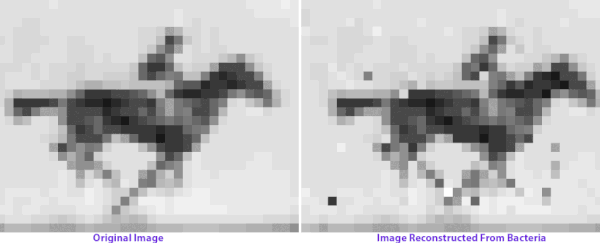Do you remember when scientists stored huge amounts of data in DNA before? that includes digital movies,
So this is the first time researchers have encoded and played back a video like this in living bacteria cells – E. coli, no less – but the team involved says this is way more than just a cinematic milestone.
 |
Seth Shipman |
"There are certain places we can't go that a cell can go," Shipman told Deborah Netburn at the Los Angeles Times."The brain is locked away inside the skull, and these changes happen rapidly and all at the same time."
To test the idea, the team of scientists converted each shaded pixel of the horse animation into a DNA code – designated by a particular configuration of the DNA nucleobases adenine, guanine, thymine and cytosine.
The scientists used CRISPR to embed this sequence of information into the genome of the bacteria E. coli, adding a new frame of animation daily.
After a week, leaving the bacteria in the lab to divide and multiply, passing the movie on to successive generations as it went – like some kind of "biological bluetooth sharing"
Later on, after sequencing extracted DNA regions taken from a sample of the bacteria, the team was able to play back the movie. The results were amazing, about 90 percent of the information was still intact – a successful test suggesting that living cells can record and retain information in sequence, which can then be extracted and played back
We might be able to track the development of diseases in real time only If that ability can be turned to record other kinds of data – such as changes in gene expression, affecting how neurons and other kinds of cells develop –
The work builds on pioneering research published by the same team last year, which saw them record 100 bytes of data in E. coli.
The new study demonstrates that the living hard drive can store more data – and record history in sequence – suggesting that cells could effectively become tiny cameras inside the bodies
The findings are reported in Nature.
















0 comments:
Post a Comment